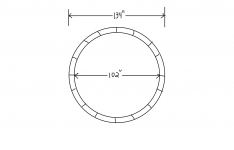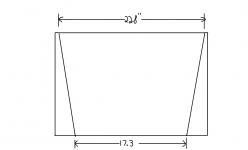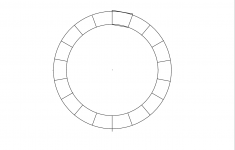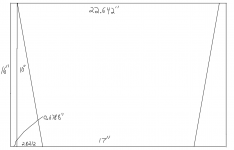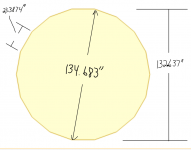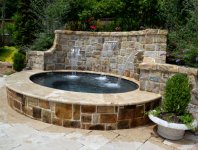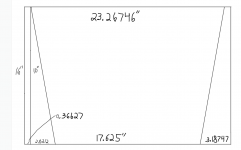I'm planning to put pool coping around the edged of a spa. I have 16x24x2" travertine, double bullnose. Before cutting them into pie shapes, I've got to figure out the radius calculation. Problem is, I wasn't great at math back in school. Does anyone have any tips or what math calculation I should be using to cut/calculate the inside/outside radius of the travertine cut pieces?
The outside spa diameter is 129-129.5" (due to concrete being slightly irregular)
The inside spa diameter is 103.5-104"
The travertine is 16"x24"
Two variables I'm uncertain about:
1. I think there would be some overhang (for the travertine) on the inside diameter of the spa. But I'm not sure what the standard overhang would normally be (since that is where peoples' heads would lay against when sitting in the spa)? The excess outside overhang of the travertine can be less precise, as there will be ledgestone on the outside wall.
2. The widths of the pie shapes for the travertine. I'd prefer the finished appearance to look as seamless and rounded as possible, but again, perhaps someone could recommend a standard size cut that would give an overall rounded/seamless appearance?
I've included a couple of photos to help illustrate better. Any advice would be greatly appreciated. Thanks so much in advance!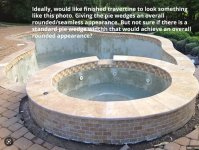
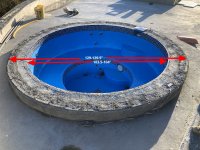
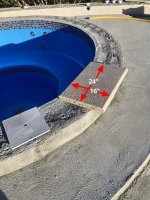
The outside spa diameter is 129-129.5" (due to concrete being slightly irregular)
The inside spa diameter is 103.5-104"
The travertine is 16"x24"
Two variables I'm uncertain about:
1. I think there would be some overhang (for the travertine) on the inside diameter of the spa. But I'm not sure what the standard overhang would normally be (since that is where peoples' heads would lay against when sitting in the spa)? The excess outside overhang of the travertine can be less precise, as there will be ledgestone on the outside wall.
2. The widths of the pie shapes for the travertine. I'd prefer the finished appearance to look as seamless and rounded as possible, but again, perhaps someone could recommend a standard size cut that would give an overall rounded/seamless appearance?
I've included a couple of photos to help illustrate better. Any advice would be greatly appreciated. Thanks so much in advance!



Last edited by a moderator:


